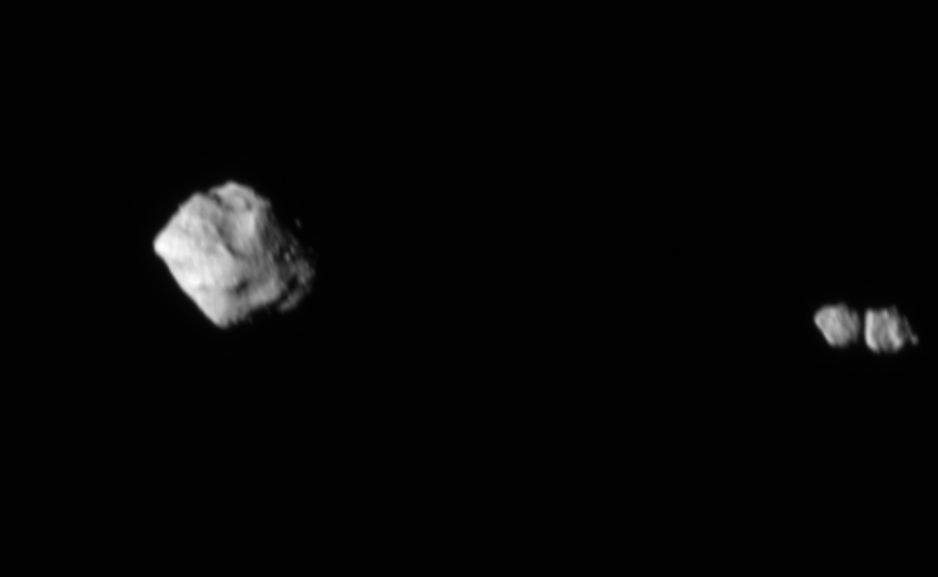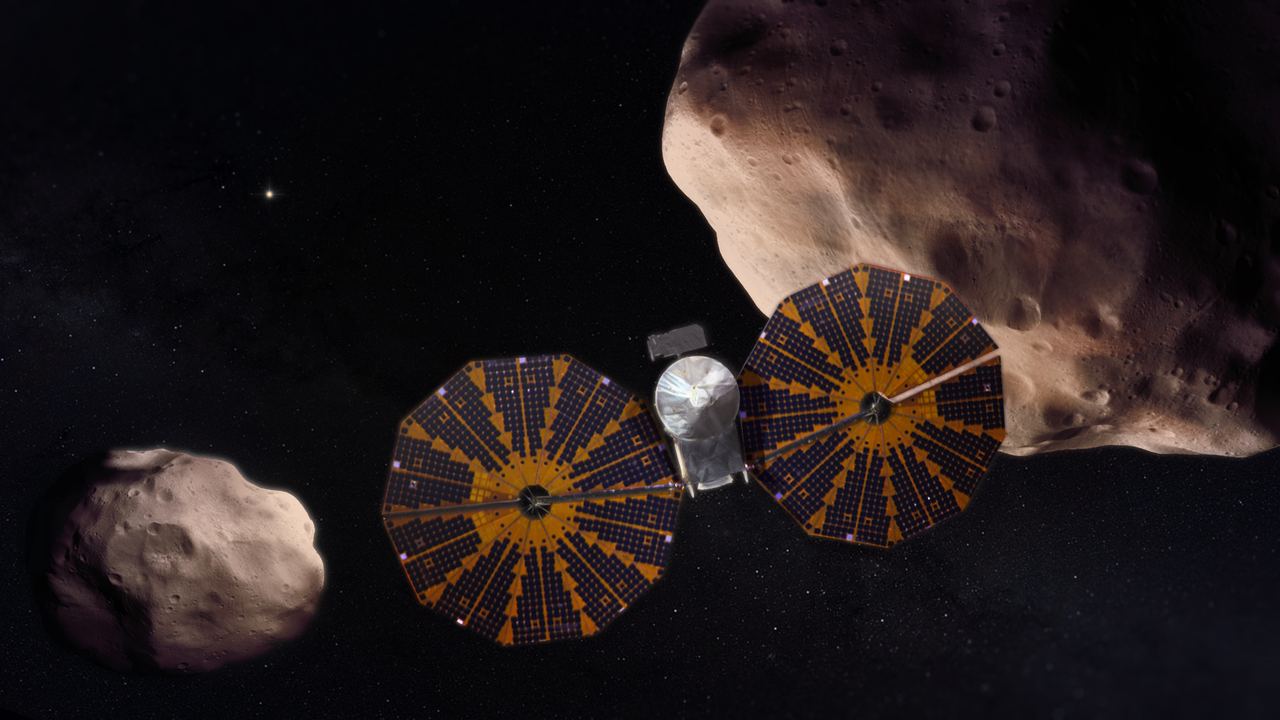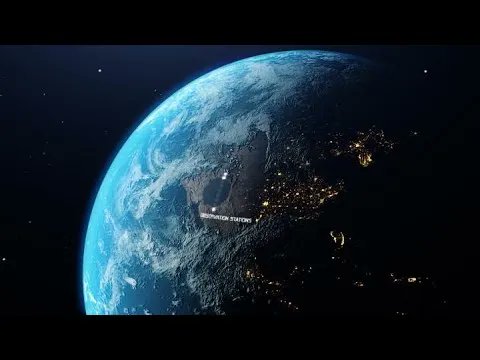Getting a mission to the point of officially being accepted for launch is an ordeal. However, even when they aren’t selected for implementation, their ideas, and in some cases, their technologies, can live on in other missions. That was the case for the Oversize Kite-craft for Exploration and AstroNautics in the Outer Solar system (OKEANOS) project, originally planned as a Japanese Aerospace Exploration Agency (JAXA) mission. Despite not receiving funding to complete its entire mission, the project team released a paper that details the original plan for the mission, and some of those plans were incorporated into other missions that are still under development.
Continue reading “OKEANOS – A Mission That Would Have Retrurned Samples From the Trojan Asteroids”Finding The Age Of A Contact Binary “Moon”
There are millions of asteroids floating around the solar system. With so many of them, it should be no surprise that some are weirdly configured. A recent example of one of these weird configurations was discovered when Lucy, NASA’s mission to the Trojan asteroids, passed by a main-belt asteroid called Dinkinesh. It found that Dinkinesh had a “moon” – and that moon was a “contact binary”. Now known as Selam, it is made up of two objects that physically touch one another through gravity but aren’t fully merged into one another. Just how and when such an unexpected system might have formed is the subject of a new paper by Colby Merrill, a graduate researcher at Cornell, and their co-authors at the University of Colorado and the University of Bern.
Continue reading “Finding The Age Of A Contact Binary “Moon””Dinkinesh's Moonlet is Only 2-3 Million Years Old
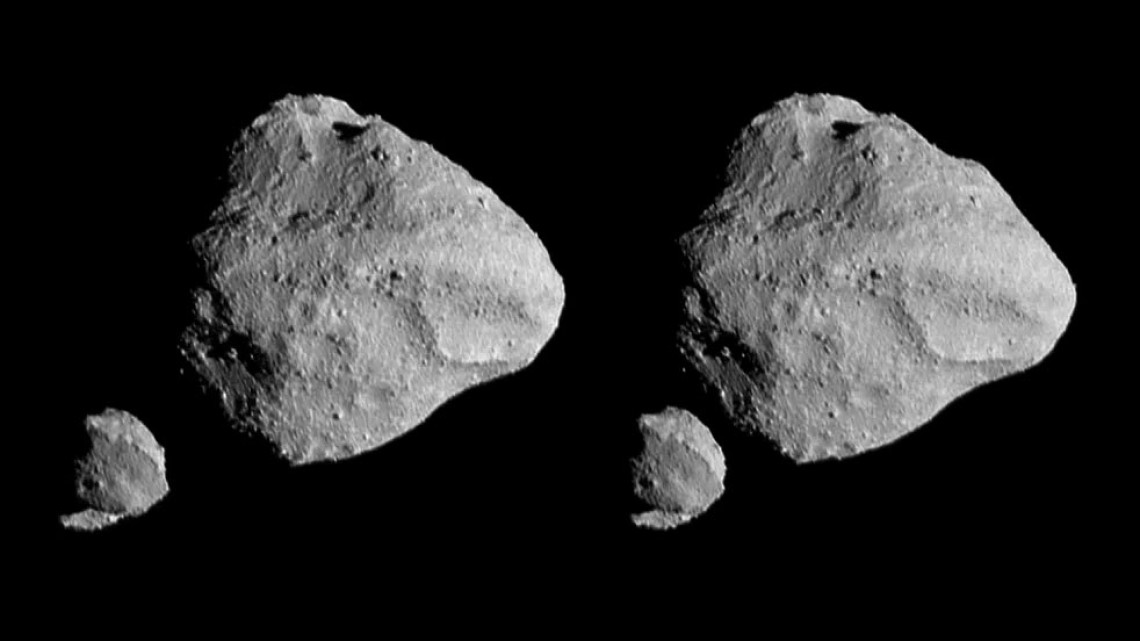
Last November, NASA’s Lucy mission conducted a flyby of the asteroid Dinkinish, one of the Main Belt asteroids it will investigate as it makes its way to Jupiter. In the process, the spacecraft spotted a small moonlet orbiting the larger asteroid, now named Selam (aka. “Lucy’s baby”). The moonlet’s name, an Ethiopian name that means “peace,” pays homage to the ancient human remains dubbed “Lucy” (or Dinkinish) that were unearthed in Ethiopia in 1974. Using novel statistical calculations based on how the two bodies orbit each other, a Cornell-led research team estimates that the moonlet is only 2-3 million years old.
Continue reading “Dinkinesh's Moonlet is Only 2-3 Million Years Old”The New Asteroid Moon Discovered by Lucy Just Got its Own Name
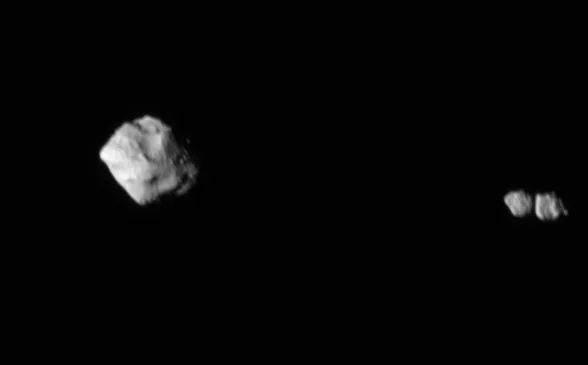
When NASA’s Lucy mission flew past asteroid Dinkinesh on November 1, 2023, it made the surprising discovery the asteroid had a tiny moon. Then came another surprise. This wasn’t just any moon, but a contact binary moon, where two space rocks are gently resting against each other. Of course, this new and unique moon needed a name, so the International Astronomical Union (IAU) has just approved approved “Selam,” which means peace in Ethiopia’s language.
But, everything’s connected here. Dinkinesh is the Ethiopian name for the Lucy fossil, and Selam is named after another fossil from the same species of human ancestor.
Continue reading “The New Asteroid Moon Discovered by Lucy Just Got its Own Name”Arrokoth is Covered in Bizarre Mounds
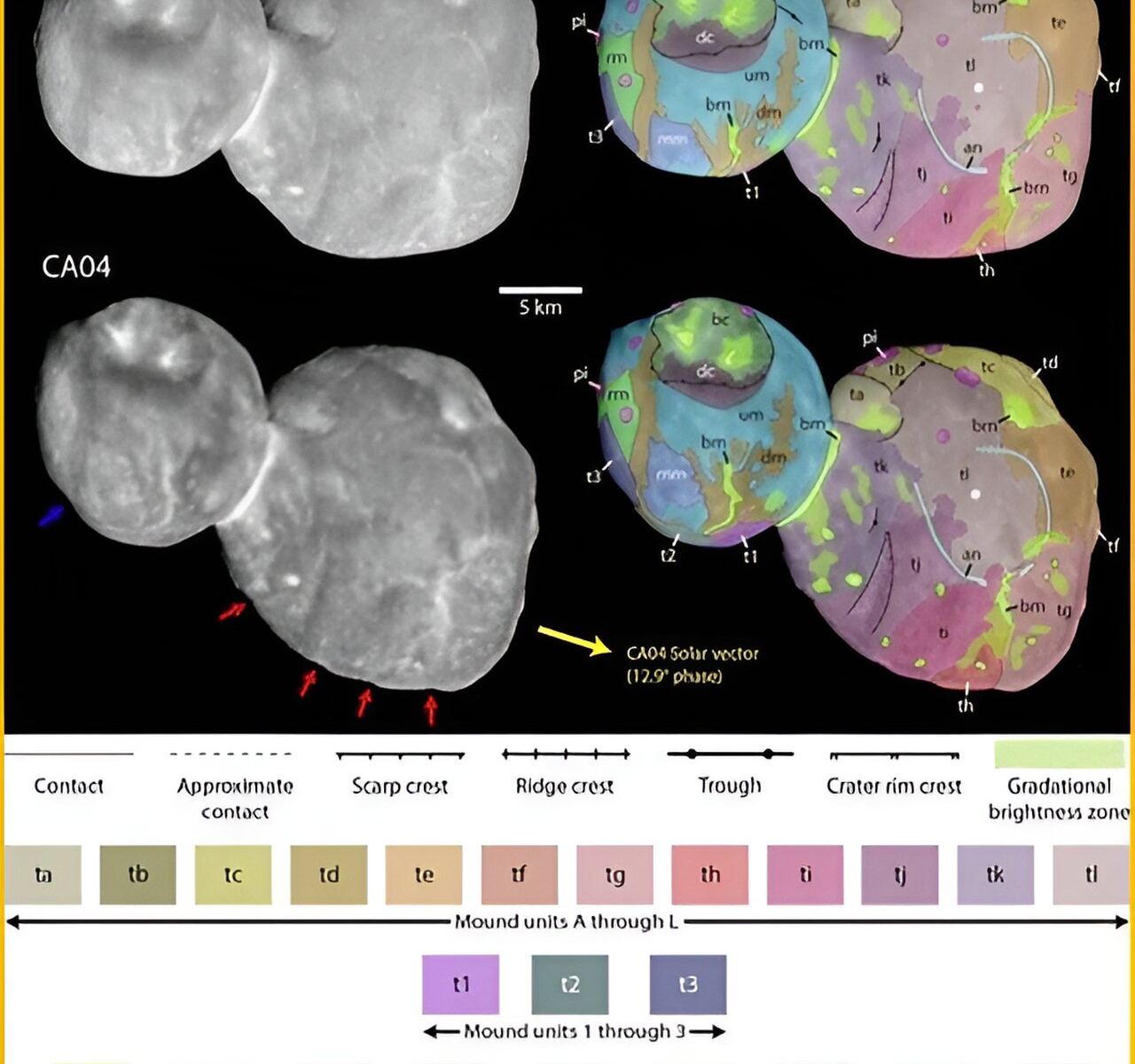
When New Horizons flew past Arrokoth in 2019, it revealed close-up images of this enigmatic Kuiper Belt Object for the first time. Astronomers are still studying all the data sent home by the spacecraft, trying to understand this two-lobed object, which looks like a red, flattened snowman.
Scientists have now identified 12 mounds on Arrokoth’s larger lobe, which are roughly the same size – about 5-kilometers long – as well as the same shape, color, and reflectivity. The scientists think their similar look is because they all formed the same way, where icy material slowly accumulated on the surface of Arrokoth.
Continue reading “Arrokoth is Covered in Bizarre Mounds”Lucy Has its First Asteroid Target in the Crosshairs
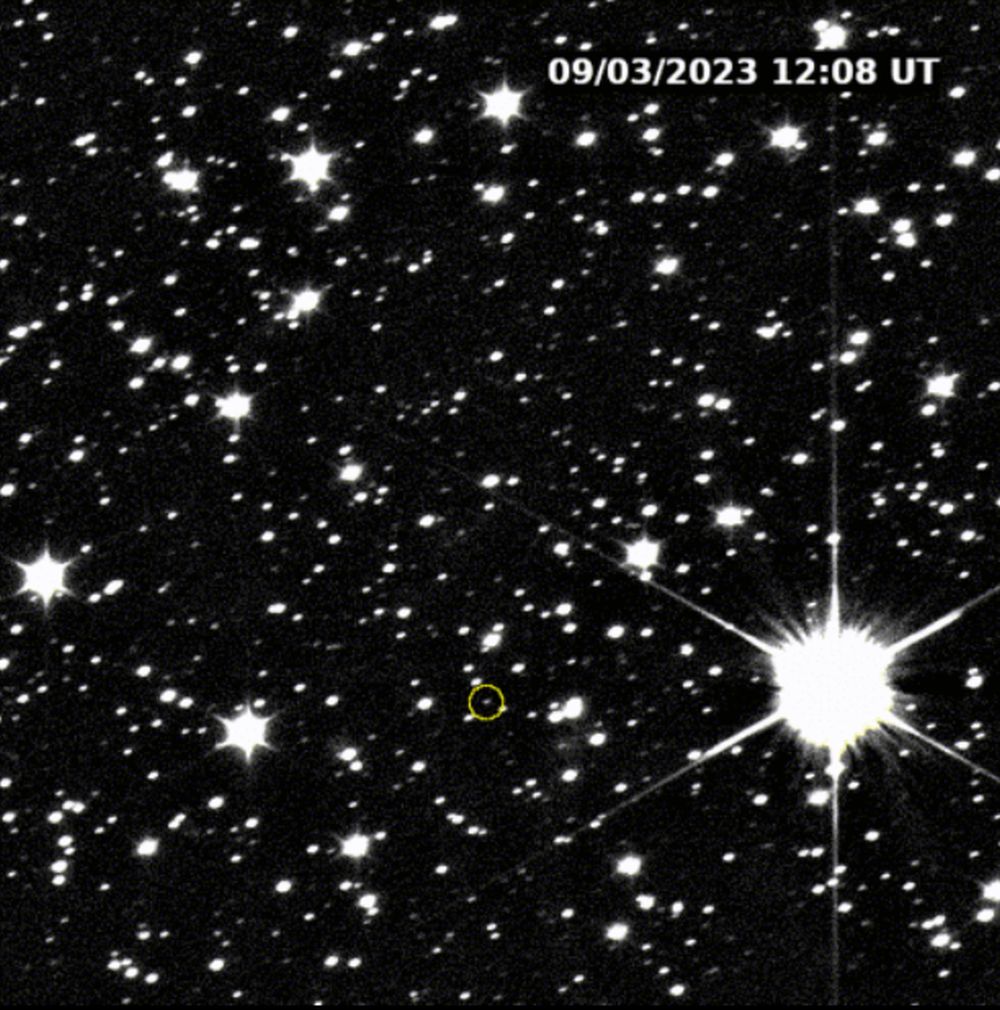
NASA’s Lucy spacecraft launched almost one year ago, in October of 2021. Its journey is an ambitious one, and long. It’ll visit eight different asteroids in its planned 12-year mission. Two of them are main belt asteroids, and the other six are Jupiter Trojans, which share the gas giant’s orbit around the Sun.
Lucy’s first, and smallest, target asteroid is now in the spacecraft’s sights.
Continue reading “Lucy Has its First Asteroid Target in the Crosshairs”Lucy Adds Another Asteroid to its Flyby List
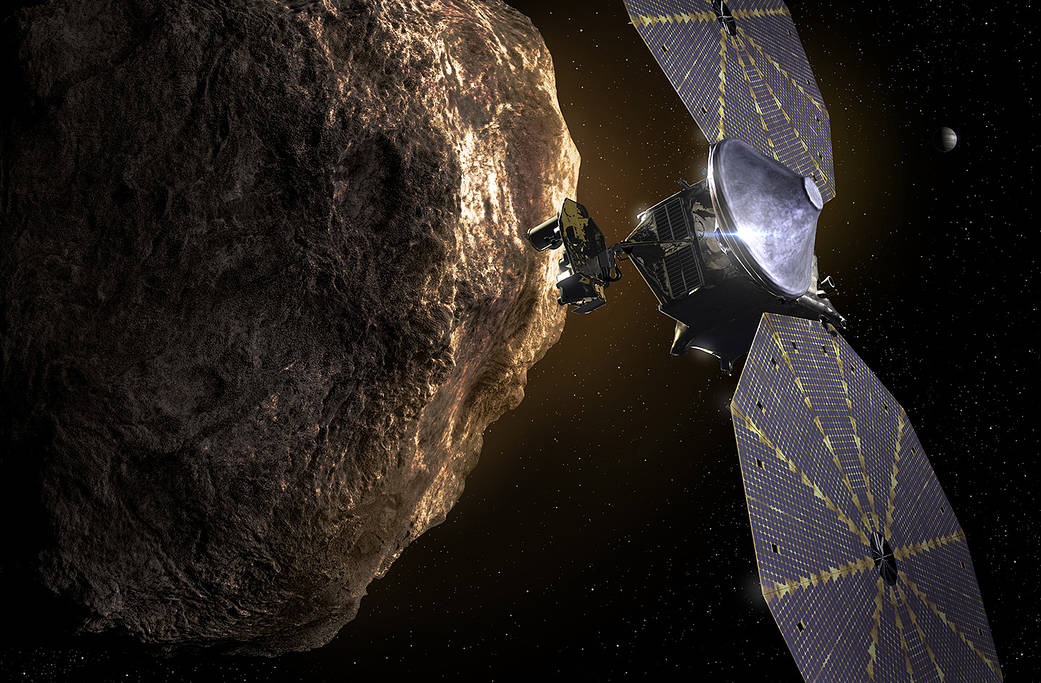
In October 2021, NASA launched its ambitious Lucy mission. Its targets are asteroids, two in the main belt and eight Jupiter trojans, which orbit the Sun in the same path as Jupiter. The mission is named after early hominin fossils (Australopithecus afarensis,) and the name pays homage to the idea that asteroids are fossils from the Solar System’s early days of planet formation.
Visiting ten asteroids in one mission is the definition of ambitious, and now NASA is adding an eleventh.
Continue reading “Lucy Adds Another Asteroid to its Flyby List”Lucy Took This Picture of Earth as it was Making its Gravity Assist Maneuver
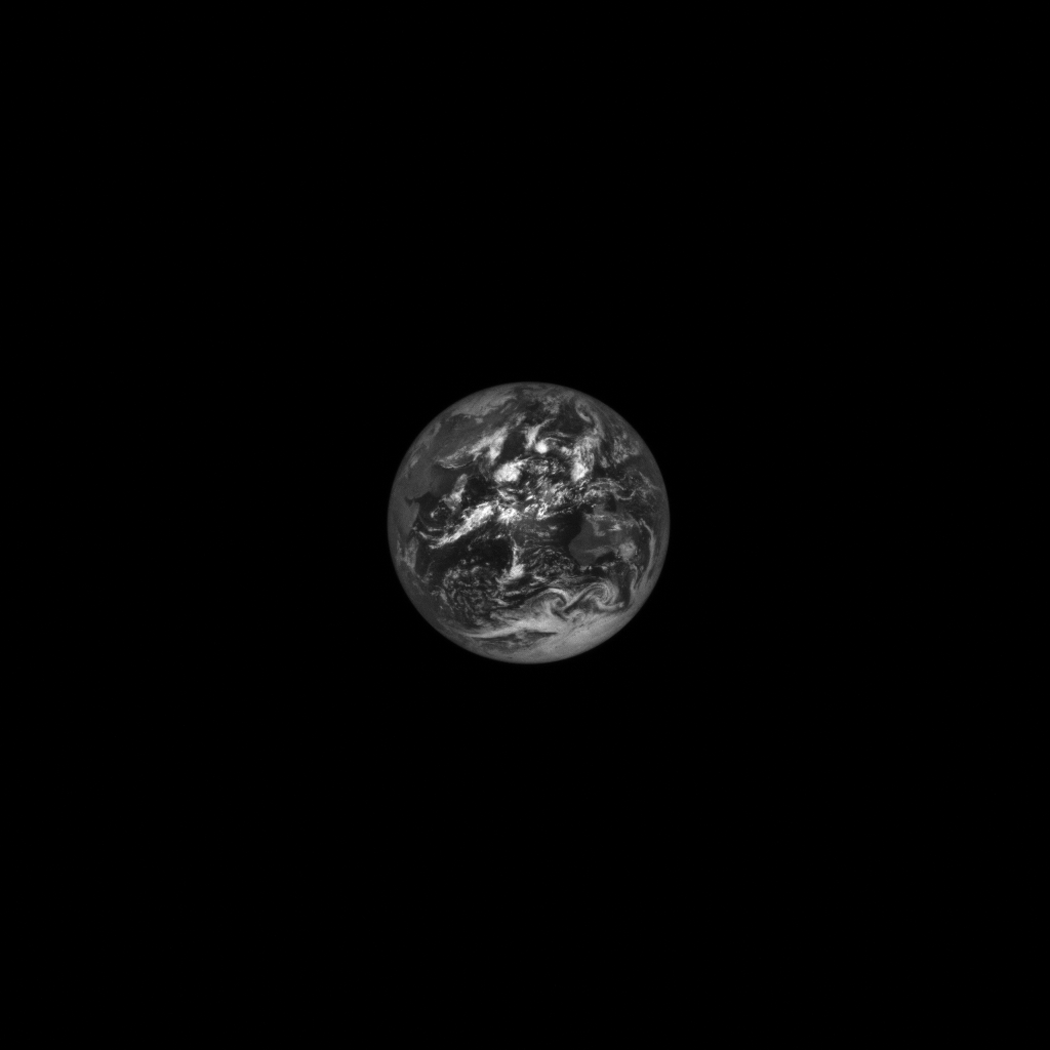
We may take it for granted, but every day we receive picture postcards from the robotic travelers we have sent out to explore our Solar System. Usually, we get to see faraway planets, moons, asteroids, or comets. But sometimes we get to see ourselves.
The Lucy spacecraft took a couple of amazing images of our home planet as the spacecraft was approaching Earth for the first of three slingshot gravity assists on its way out to explore the Trojan asteroids along Jupiter’s orbit.
Continue reading “Lucy Took This Picture of Earth as it was Making its Gravity Assist Maneuver”NASA is Ready to try and fix Lucy’s Unlatched Solar Panel
NASA’s Lucy spacecraft, currently on its way to the outer Solar System to study Jupiter’s Trojan asteroids, has a solar panel problem. Shortly after its launch last October, engineers determined that one of Lucy’s two solar panels failed to open completely. While the spacecraft has enough power to function, the team is concerned about how the unlatched panel might hinder Lucy’s performance going forward. In an attempt to fix the problem, the team will carry out a new procedure next month that is designed to unfurl the solar panel the rest of the way, and latch it firmly in place.
Continue reading “NASA is Ready to try and fix Lucy’s Unlatched Solar Panel”Astronomers Lined up Under an Asteroid’s Shadow to Measure its Size Precisely
Astronomers will go to great lengths for science. Recently, dozens of astronomers had the misfortune of traveling to one of the most tempting locales in the southwestern US – Las Vegas. But they weren’t there for the city’s bright lights – they were there to observe a very dim light of a star thousands of light-years away. And what they specifically wanted to see was the light from that star blink out for a few seconds. That lack of light provided the exact kind of data they needed to help them determine the size of Eurybates, one of the Trojan asteroids that will be the focal point of NASA’s Lucy mission.
Continue reading “Astronomers Lined up Under an Asteroid’s Shadow to Measure its Size Precisely”

